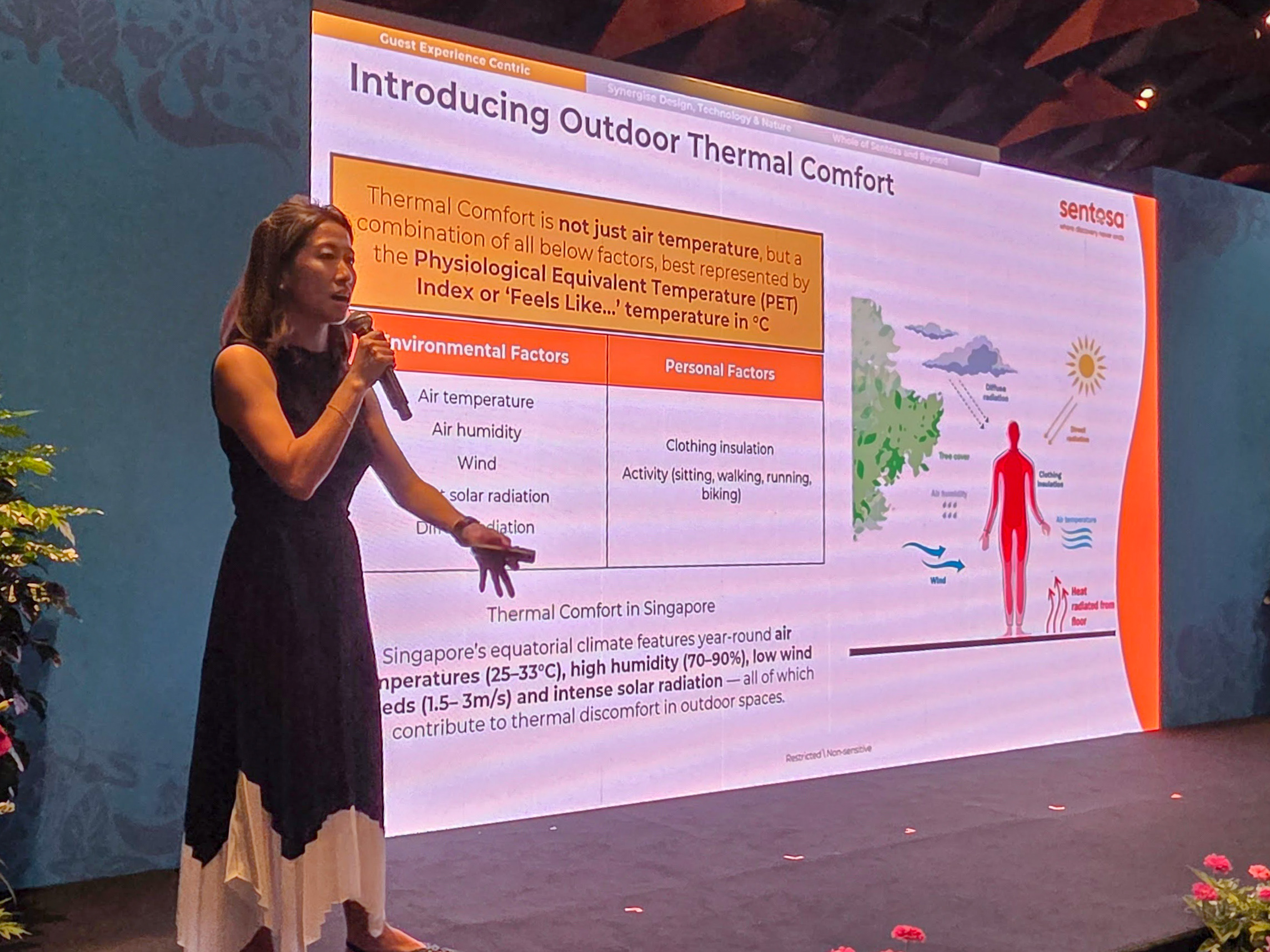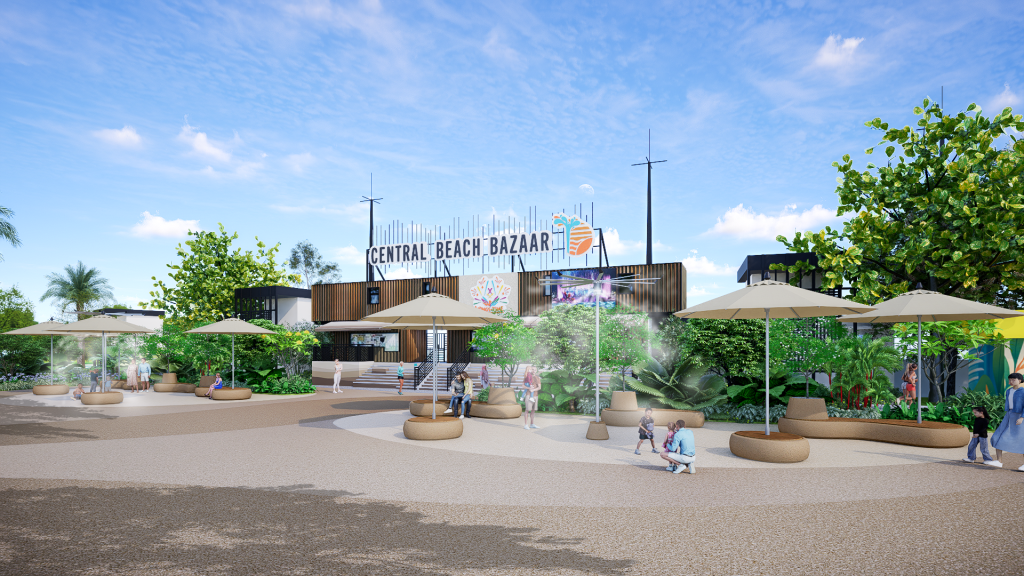
Outdoor Thermal Comfort study guides climate-responsive design at Sentosa, Singapore
Cristina Kuo Lin, Divisional Director, Environmental at Atelier Ten (Asia) shared more about the study at the launch of the Cooling Sentosa Roadmap
Atelier Ten is supporting Sentosa Development Corporation (SDC) in enhancing outdoor comfort across Sentosa- Singapore’s premier island destination. The work forms part of the Cooling Sentosa Roadmap, a strategic initiative to address outdoor heat stress and improve climate resilience in public spaces.
Appointed to lead the Outdoor Thermal Comfort (OTC) study, Atelier Ten combined field measurements with advanced computational simulations to understand how heat is experienced across the island – not just where temperatures peak, but where cooling interventions would have the greatest impact on people.
“We reset the brief around human experience,” said Cristina Kuo Lin, Divisional Director, Environmental at Atelier Ten (Asia). “By integrating on-the-ground data with macro and micro simulations, we identified where cooling would deliver the greatest benefit. SDC’s people-centred, data-led approach offers a model for Singapore’s liveability, urban planning, and tourism precincts.”
The study now underpins the roadmap and guides the design of cool nodes and cool zones – purpose-built spaces that aim to reduce Physiological Equivalent Temperature (PET), reflecting how people actually feel heat.

Artist impression of Sentosa’s Central Beach Bazaar forecourt cool node) (Photo credit: Sentosa)
One of the first implementations is the cool node at Central Beach Bazaar, which will feature:
- Parasol canopies and landscaping for shaded seating
- High-volume low-speed (HVLS) fans for consistent airflow
- Misting systems to enhance evaporative cooling
- High solar reflectance paving to reduce heat absorption
These measures are projected to deliver a minimum 4°C improvement in PET, significantly enhancing comfort for guests.
Atelier Ten’s work on Sentosa reflects our commitment to creating resilient, inclusive environments – where design, data, and sustainability come together to deliver measurable impact.